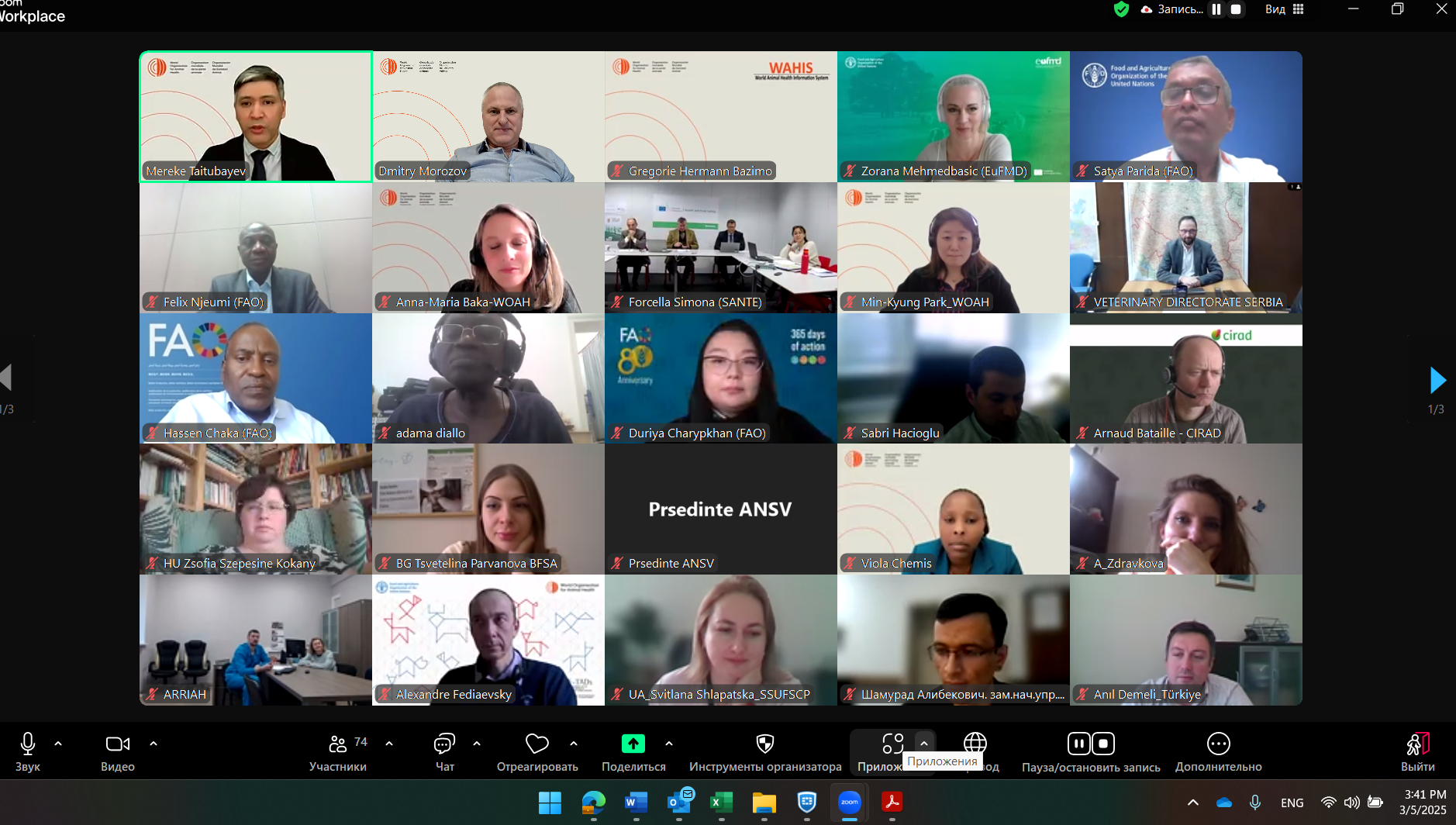On March 5, 2025, two key online meetings took place under the Global Framework for the Progressive Control of Transboundary Animal Diseases (GF-TADs) umbrella:
These sessions brought together international organisations (WOAH, FAO, European Commission, and EuFMD), reference laboratories’ experts, and country representatives to discuss the current epidemiological trends, control strategies, challenges, and future recommendations for managing LSD and PPR across Europe and neighboring regions. The discussions were particularly timely, given recent PPR outbreaks and the increasing risk of disease spread due to animal movement, trade, and environmental factors.
Lumpy Skin Disease was successfully eradicated in Southeast Europe but continues to pose a significant threat to cattle populations, particularly in regions bordering infected areas. The SGE LSD-14 meeting provided an opportunity to assess the disease situation in different regions and refine strategies for prevention and control.
Key Presentations and highlights during the meeting:
During the discussion, the following conclusions and next steps were highlighted:
As regards Southeast Europe:
As regards Central Asia:
The session on LSD concluded with a commitment to continued regional cooperation and a plan to monitor LSD management efforts closely in the coming months. However, it was clarified that in the absence of major LSD events in Southeast Europe and given the limited active participation of the Central Asia countries, regular meetings of the Standing Group of Experts on Lumpy Skin Disease in Europe will be suspended until there is a clear commitment by the countries concerned and an indication by them of the need for support, as well as a willingness to engage and thus contribute added value in the coordination of control measures by GF-TADs Europe.
PPR has become an emerging threat in parts of Europe and surrounding regions, with several new outbreaks recorded in the past year. The webinar focused on disease trends, control measures, and regional strategies for prevention and eradication.
Key presentations and highlights:
Both the SGE LSD-14 and PPR Webinar reaffirmed the critical need for regional collaboration, transparency in disease notification, science-driven policies, and proactive disease control measures. The discussions underscored the importance of:
As a next step, countries and stakeholders will continue working within the GF-TADs framework to implement these strategies, ensuring that both LSD and PPR prevention, management, and preparedness remain high priorities in the European and global animal health agenda.
Notification of animal diseases to WOAH and the LSD epidemiological situation (global, regional), Gregorie Hermann Bazimo, WOAH
WOAH Standards on LSD, Charmaine Chng, WOAH
LSD related activities at the EU level, Dimitrios Dilaveris, DG SANTE
Current PPR situation in Europe and measures at the EU level, Dimitrios Dilaveris, DG SANTE
PPR emergence in Europe: insights from viral genetic investigations, Arnaud Bataille, CIRAD
Increased risk of entry of FAST diseases such as PPR, SPGP, and FMD in Southeast Europe, Zorana Mehmedbasic, EuFMD
Recovery of official PPR-free status, Anna-Maria Baka, WOAH
Recommendations of the PPR Roadmap meeting for ECO in 2023, Mereke Taitubayev, WOAH SRR for CA
Countries’ presentations
LSD: Türkiye,
PPR: Romania, Bulgaria, Hungary, Georgia
